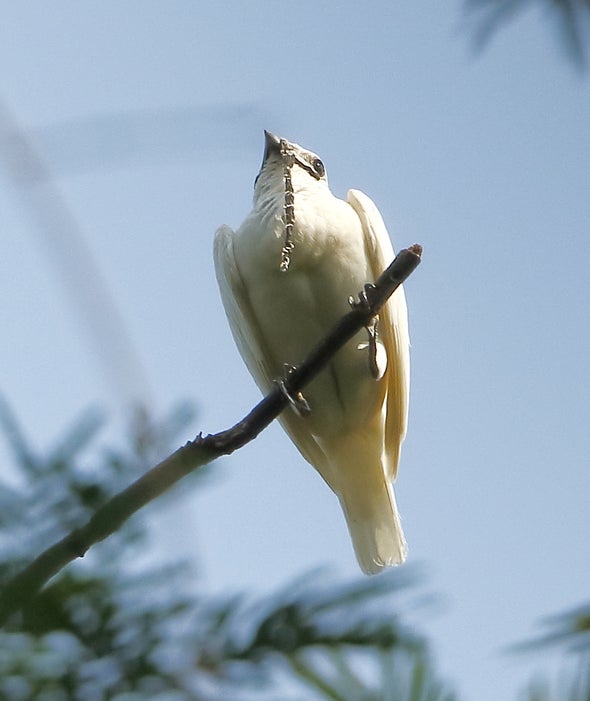The white bellbird is not very showy when compared with the colorful plumage of other Amazonian birds. Except for its very wide mouth, with a long and tapered wattle that starts from the upper part of the beak, it is a rather anonymous bird and that would easily go unnoticed, were it not for its powerful singing skills.
Its verse has a metallic and alien touch, and when he sings with his fellows it almost seems to be in a forge where some blacksmiths are competing over who is the loudest.
It has been observed how that a white bellbirds singing is audible throughout vast forests and mountains of the Amazon, and can be heard from miles away. Their rather thick abdominal wall has something to do with their noise, the abdominal wall borders the abdominal cavity and is in practice the container of numerous organs and other internal tissues. With decibel and distance meters technology, advancing in recent years have made these tools cheaper and easier to transport, opening up new possibilities for those who do research.

Research happening by measuring the distance of some specimens of white bellbird and then detecting their song, noting that it is produced with two variants: a longer and modulated one, and a shorter one with a much higher volume that reaches 125 decibels, equal to hearing a jet plane taking off about 50 meters away. The figure is three times higher than that of the Screaming piha (Lipaugus vociferans), so far considered the bird with the record for noise. The two versions of the song serve different purposes and the researchers noted that the louder the white bellbird sings, the shorter his performance. The louder singing is also simpler and less modulated, because it obviously requires more energy to perform.

Reaching an average of 28 cm of length, the male is of white bellbird is white with a black beak and long dark wattle, with few white feathers on it. This wattle hangs and dangles down from the top of the beak, falling on one side, generally the right one. On the other hand the female is greenish in color, with some yellow on the underside, for the rest it looks like the other bellbirds, and could even be mistaken for the Bearded bellbird, which usually has a dark olive head and black lines on the front of the neck.

Even though it’s quite a rare bird to see, its complessive population is thought to be very big and its range of distribution is very wide, expanding to vast areas of the Amazonian forest. Although the number of individuals may be slightly declining, it is luckily not happening at a too fast pace to be considered under threat. The white bellbird is therefore rated as Least Concern (LC) on the IUCN’s Red List.










